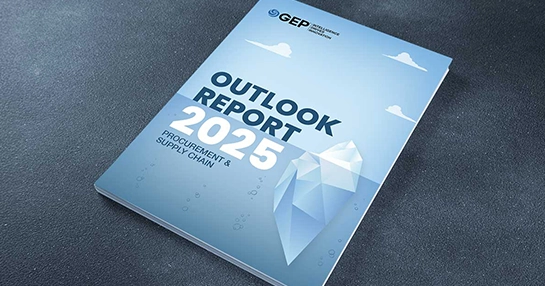
How Advanced S2P Applications Can Unlock Strategic Value in Procurement
- S2P isn’t just about efficiency; it’s about turning procurement into a growth engine.
- Predictive analytics, sustainability, and risk monitoring are where S2P delivers real competitive advantage.
- Use S2P for more than invoices; use it to future-proof your business.
October 15, 2025 | Procurement Strategy 4 minutes read
You already know what Source-to-Pay (S2P) applications can do at the basics. By cutting down on paperwork, speeding up sourcing it makes supplier management a lot less painful.
But here’s where it gets interesting: the real value of S2P isn’t in shaving a few hours off invoice processing. It is however in how you use it to shape strategy.
With the right setup, you can forecast demand shifts before they hit, mitigate supplier risk before it blows up your budget, and hardwire sustainability across sourcing decisions.
Know that if you’re only using S2P for operational efficiency, you’re leaving value on the table.
Elevating S2P Beyond the Basics
Think about how much has changed in procurement in the past five years. Market volatility, rising ESG expectations, supply chain shocks, you’ve had to deal with all of it. Modern S2P applications aren’t just built to keep up, they’re built to give you an edge.
1. Predictive Procurement with AI
Instead of always reacting after something goes wrong, imagine being able to see problems coming before they land on your desk. That’s what advanced S2P platforms are starting to deliver. With AI and machine learning crunching historic spend data, market trends, and even geopolitical signals, you can get a much clearer view of what’s ahead. Suddenly you’re not just relying on sales projections; you’re forecasting demand with more accuracy. You can spot supply shortages before they cause chaos and negotiate contracts with an eye on future cost shifts. It’s basically moving procurement out of “firefighting mode” and into “proactive strategy mode.”
2. Driving Sustainability Goals
Let’s be honest, the pressure to hit ESG targets isn’t going away. But instead of treating sustainability as a side project, advanced S2P tools make it part of everyday decision-making. You can score suppliers not just on price and quality but on their environmental and ethical performance. You can track emissions across your supply chain and see the real impact of your sourcing choices. And you can choose vendors who actually align with your sustainability goals instead of just ticking a compliance box. The difference is that sustainability stops being a nice-looking slide in your board report and becomes something you actively manage every day.
3. Enhancing Supplier Collaboration
Managing suppliers is one thing; collaborating with them is another. Advanced S2P platforms are built for that next step. Instead of chasing updates by email, you get shared dashboards, real-time communication, and even spaces where you can co-develop solutions together. It shifts the dynamic; you’re not just monitoring supplier performance, you’re building actual partnerships. And when suppliers feel like true partners, you’re more likely to see innovation, resilience, and shared wins.
Unlocking Advanced Features You Might Be Missing
If you’ve already nailed the basics like eSourcing and eInvoicing, it’s time to explore the features that take procurement from tactical to strategic.
Dynamic Risk Monitoring
AI helps you track supplier's financial health, notify you of any potential compliance issues or other global risk indicators, that too in real-time. This helps you stay proactive and find alternatives to avoid disruption.
Unified Spend Analytics
Visibility is very important, as you know it. Instead of siloed views, you get one consolidated picture across direct, indirect, and services spend. With AI-classified data, you can finally answer “where exactly is our money going?” with confidence.
Embedded Payment Solutions
Currency conversion, global transfers, and fraud protection, all streamlined inside the S2P platform, so you don’t have to chase finance for updates.
These aren’t “nice-to-haves.” They’re capabilities that let you stay ahead of risks and make procurement more strategic. Parenting with the right technology solutions can help you gain access to these tools and boost your S2P processes.
Making Sure You See Real ROI
Buying a new platform is one thing. Actually squeezing value out of it is another. To make S2P work for you, it has to be embedded in strategy, not just IT.
Align with Business Goals
Your procurement objectives should map directly to your organization’s bigger priorities. If revenue growth is key, use analytics to uncover savings that can fund expansion. If speed-to-market matters, use supplier collaboration tools to shrink product development cycles.
Commit to Continuous Improvement
Don’t just measure once. Track KPIs like cycle time, compliance rates, and realized savings regularly. As new features like more advanced AI risk engines become available, fold them in.
Drive Adoption
This is the big one. A platform is only as good as the people who use it. If your team or suppliers don’t buy in, the value evaporates. Invest in training, choose intuitive interfaces, and keep communication open. Adoption is the real ROI multiplier.
Ready to leverage agentic AI in procurement?
Download The Agentic AI Playbook to see how leaders are moving from automation to autonomy.
Where S2P is Headed
If you think today’s features are advanced, take a look at what’s coming.
Autonomous Procurement
End-to-end sourcing, contracting, and payments managed with minimal human input. Think of it as procurement on autopilot.
Hyper-Personalization
Dashboards tuned to specific roles. A procurement manager sees spend analytics at a glance. AP sees streamlined invoice workflows. No more one-size-fits-all screens.
Sustainability by Default
Instead of tracking ESG separately, platforms will benchmark supplier sustainability as part of every sourcing decision, giving you instant insights on impact reduction.
The Takeaway
If you’re only using S2P to streamline tasks, you’re underselling it. The real edge comes from applications like predictive analytics, sustainability insights and risk monitoring. This helps you turn procurement from an efficiency tool into a driver of growth and resilience.
Most teams still treat S2P like an admin tool. The real value comes when you use it to forecast demand, hardwire sustainability, and manage risk in real time. That’s how procurement shifts from back-office to boardroom driver.



